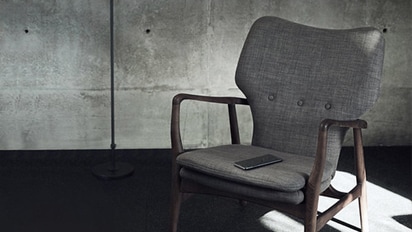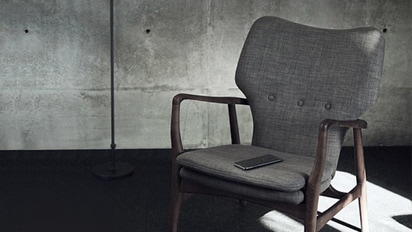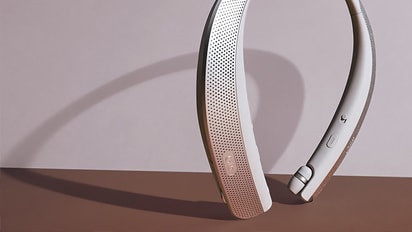If water is leaking from the air conditioner, this may be due to normal operation, condensation process or proper leveling. The first step to stop the leak is by finding out if the leak is coming from inside or outside of the home.
-
What type of air conditioner do you have?
Portable
Window
Through the wall
Ductless / Split
-
As water condenses during the cooling process, excess moisture is accumulated in the collection tank at different rates; depending on the humidity of your location. Some moisture is expelled through the exhaust, some of it re-evaporate into the room, and the excess is pushed through the drain hole.
Note: How often the unit needs to be drained depends on the humidity of your location, and how often the air conditioner is used. The draining frequency can vary from 6-8 hours to several weeks.
Next Step -
Is the unit leaking from the top vent?
-
This is a normal process when cold air comes in contact with warm air, and the moisture condenses over the vent. Think of when drinking a cold glass of water on a hot day. The glass is not leaking, yet moisture forms on the outside.
To reduce this effect, keep the AC running during the day, just set the temperature to a warmer temperature to save electricity.
-
Verify that the air conditioner is leveled.
-
If the unit has wheels, verify that they are all properly attached.
-
Make sure the unit is not resting on any other items that can make it tilt.
-
If the unit is on a carpet, verify that the unit does not slant.
Next Step -
-
Verify that the rubber plug and drain cap is sealed properly.
If the drain cap or drain hose is wet, it means it is not properly attached or may need to be replaced.
Note: Some units may have the drain cap in the middle of the unit, some towards the bottom, and some will have both. If you need further help finding the drain cap, please refer to the owner's manual of your unit. You can download a copy of the manual from our Manuals and Documents page.
Next Step -
Another option is to install a drain hose, keep in mind that drain hoses depend on gravity to move water.
-
Remove the drain cap and rubber plug from the back of the unit.
-
Purchase and install drain hose on the back of the unit, and place the open end in a container, drain or outdoors.
Note: The diameter of the drain hose depends on your model; please refer to your owner's manual regarding the correct hose diameter. You can download a copy of your owner's manual from our Manuals and Documents page.
Next Step -
-
If the unit continues to leak after the drain cap or drain hose is properly connected, the unit will require a repair service. Please visit our Request a Repair page for a professional service.
-
As water condenses during the cooling process, moisture is accumulated in the base pan, and drained outside the home. The unit is designed to operate with 1/2 inch of water in the base pan, so there is no need to add water if the pan is dry.
Is the water leaking on the inside of the home or on the outside?
-
-
Clear the unit from debris.
Check the unit's base container and clear it from debris. Debris such as leaves, dust, pine needles, residue and others forms of debris could cause restriction of the water draining from the unit. This dripping restricted water can be seen as leaks.
-
Drain excess water.
In humid weather, excess water may cause the base pan to overflow. To drain the water:
-
Remove the drain cap and secure the drain pipe to the rear hole of the base pan.
-
Press the drain pipe into the hole by pushing down, but more away from the fins to avoid injury.
-
The drain hole at the back of the unit should be unplugged and clear of debris.
Moreover, for window air conditioners and other chassis models that can slide out of the wall, it is advisable to gently slide out the air conditioner to clear the base pan for debris; such as leaves, pine needles and other kinds of debris.
-
-
Is the unit tilted from front to back?
Leaking is likely caused by improper installation of the air conditioner. If the unit is not tilted from front (inside) to back (outside) by ¼” to ½” water may leak inside the room. Check our INSTALLATION CHECKLIST below to make sure your unit is installed properly.
-
-
-
Check if the drain hose is connected properly and not kinked or clogged.
-
The unit must be installed securely and braced firmly to wood, masonry, or metal.
-
The unit should be installed where the sunlight does not shine directly on the unit during the hottest time of the day. Or, an awning or sun shade has been installed.
-
The unit must have sufficient outside clearance around all sides, top, and bottom for optimum air flow.
-
The unit should be tilted from front (inside) to back (outside) by ¼” to ½”.
To achieve this rearward slope, and the A/C Unit to drain properly, remove the 1113/16" shim strips; and attach them as shown below. The higher portion of the shim should be placed in front of the rib on the base of the wall sleeve.
If the unit is installed correctly, and the drain hole is unplugged and clear of debris, the unit will require a repair service. Please visit our Request a Repair page for a professional service.
-
-
Water draining from the A/C unit outside the home is normal. The cooling process produces condensation, it collects in the base pan, and drains to the outside. When higher humidity is present, more water is collected in the pan. If water is not draining properly from the unit unto the outside:
-
Check for a clogged drain pipe, and clean the drain pipe if necessary.
-
Check for dirt and debris in the base pan, and clean it if necessary.
-
-
If you notice vapor or water spitting out from the air vent, this is not a leakage issue. Here is the explanation for this occurrence:
-
If you are looking for information about a split unit or duct-free air conditioner, they are considered as business units and will not be covered in this article. Please visit http://www.lg-dfs.com for further support.

Sanmi is a Home Appliance expert and author of this help library article. Please leave him feedback below about the page.












